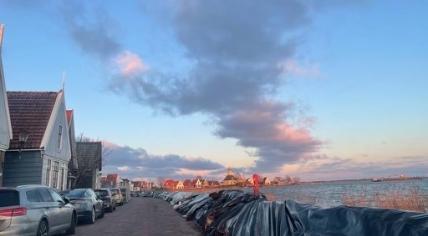
Netherlands has 3 options to cope with sea level rise: Dams, dikes, or moving with water
The Netherlands has three options to cope with the sea level rise expected from climate change, according to a report by the Delta Commissioner published on Monday. The Netherlands can keep itself safe with increasingly higher dikes and heavier pumping stations, a massive dam in the North Sea, or by moving along with the water, NOS reports.
The Delta Commissioner drew up the report for the Ministry of Infrastructure and Water Management. It worked with consultancy firms, scientists, governments, and social organizations to develop the three directions the country could move in.
The first option is “protect” - continuing with the current approach for as long as possible. Make the dikes higher and wider, and make the polders deeper. The downside is that the Rijn and Maas may eventually have to be dammed, which will have significant consequences for nature and require increasingly stronger pumping stations to prevent the Netherlands from filling up with rain and river water.
“Seaward” is a massive dam and edge lake off the Dutch coast. The rivers will flow into this dam before flowing to the sea. That will initially happen under their own power but will eventually need strong pumping stations.
The last option is to “move along” with the water. “Think of elevated or floating housing, salt-tolerating agriculture, and a shift of investments to the upper Netherlands,” the report states. The downside is giving up land, but the strategy is scalable for the very long term.
“Together with our engineers, hydraulic engineers, and knowledge institution, we looked at how we can continue to live here safely in the long term,” said Delta Commissioner Co Verdaas. “As a low-lying country, rising sea levels present us with an enormous task and drastic choices. But if we can handle this anywhere, it is here.”
The report worked on a sea level rise of 2 to 5 meters. “We see that there are possibilities to cope with even an extreme sea level rise of five meters,” outgoing Infrastructure Minister Mark Harbers said, according to NOS. “We also see that it will have significant consequences for the organization of the Netherlands.”
According to Harbers, the good news is that the Netherlands still has time to decide which direction to choose. “That time is also needed to gather more knowledge and to prepare our country for the big choices we will make in the future.”
